Author Archives: Holly Christensen
Author Archives: Holly Christensen
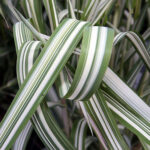
I’ve been planting a wide variety of nursery stock from the moment I had a yard to plant in. I bought my first home in the 80’s and after ripping out pretty much everything that was there – it was time for a rehab – I started bringing home my favorite plants from our vast inventory here at Christensen’s. That employee discount got QUITE a workout, let me tell you. Sure, there were failures, for example my attempts to grow daphne, oxydendron, and a succession of acer palmatum, but in my mind a dead plant just opens up a spot to plant something new.
However.
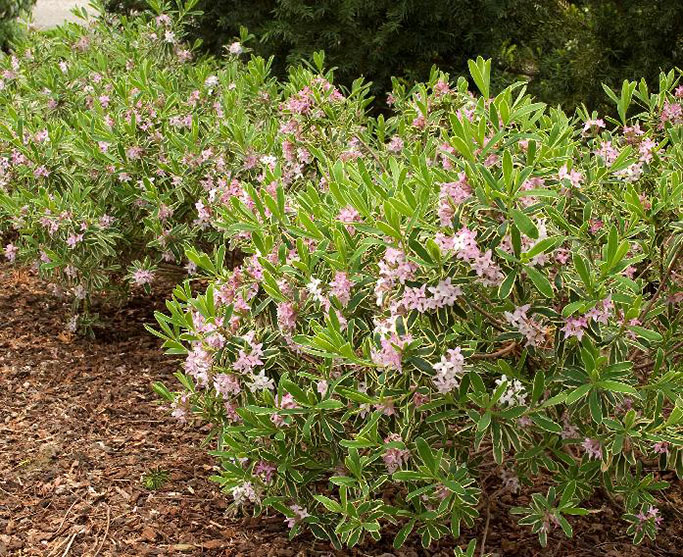
Daphne x burkwoodii 'Carol Mackie' - Doreen Wynja / Monrovia Nursery
There are some plants I NEVER should have planted. They all have one thing in common – aggressive, invasive growth. It’s not an accident that several of them are vines, plus some perennials that spread underground and come up yards away from the perfect spot you chose for it then proceed to colonize the rest of your yard, and the neighbor’s yard, too. Word to the wise – avoid “plant swaps”. There is a reason people have excess to trade.
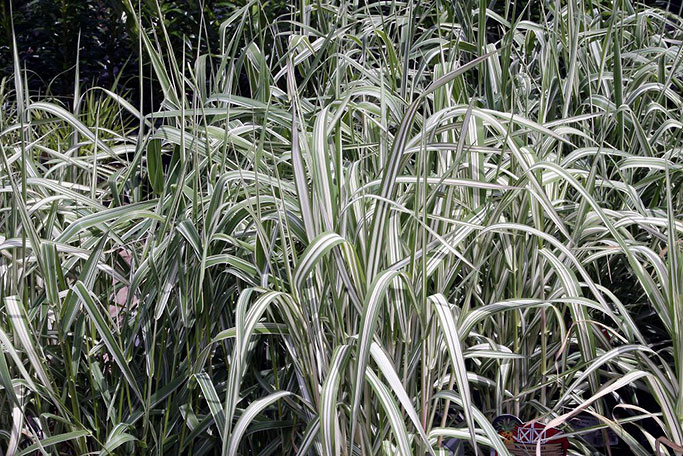
I didn’t plant any bamboo, luckily, but the Japanese anemone had to come out, as did the Ribbon grass (Phalaris). I didn’t plant the Aegopodium or the Convallaria, but only was ever able to eradicate the Aegopodium as the bed was contained by the concrete drive. We built a giant sieve out of hardware cloth and I dug up the whole bed and got every scrap of root. The Lily-of-the-valley persists to this day among some hosta I transplanted to my new house, wish me luck.

The beautiful Porcelainberry vine I hid behind the garage is probably still sprouting back in spite of repeated attempts with spade and sprayer, and the gigantic Sweet Autumn Clematis that grew to cover the entire shade structure is likely still trying to swallow Plymouth Township. But it sure was pretty and smelled fantastic. But don’t plant one. It’s horrible.
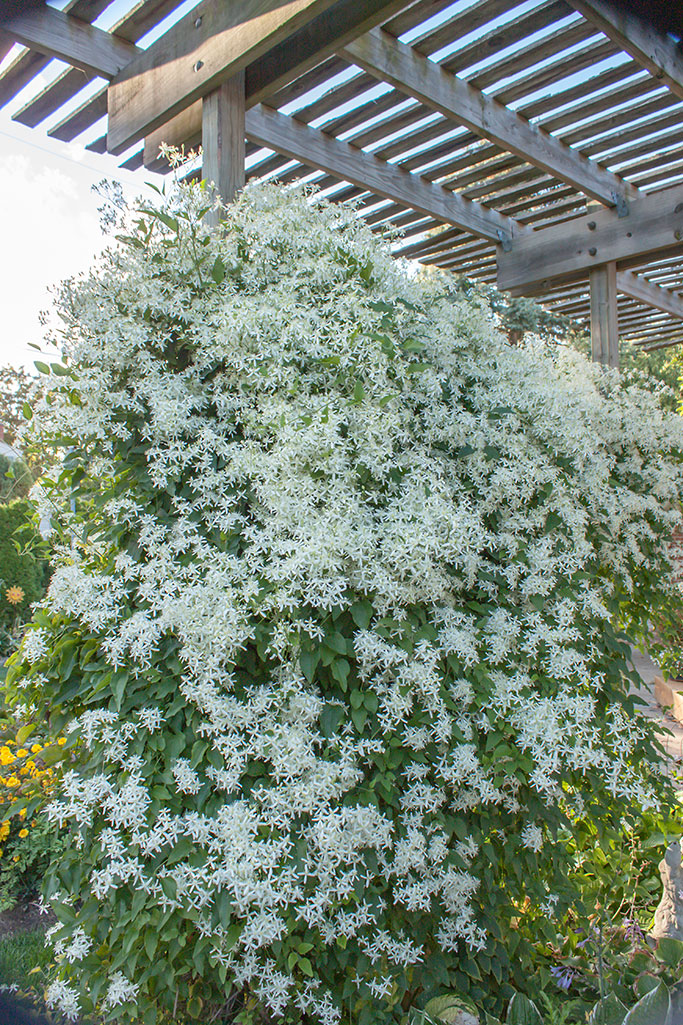
The number one worst plant I ever planted was the Trumpet vine. Fond memories of plucking the orange flowers and tasting the nectar inside (sorry, hummingbirds) from my Grandmother’s yard at the original nursery on Ann Arbor Road gave me the bright idea of planting one in a tiny spot in the side garden of my postage-stamp yard. I even extended the chain-link fence six feet higher to give it a nice trellis to climb on. Visions of hummingbirds filled my imagination, and I figured in a year, maybe two – OK, FINE, three – I’d be a major stop on the hummingbird highway.
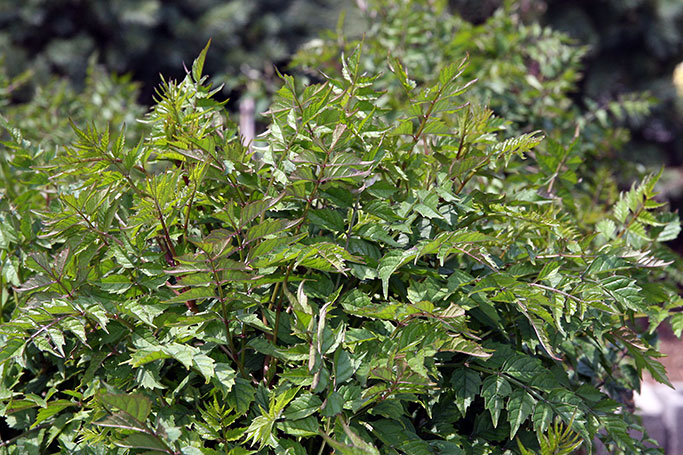
Hah.
The seasons passed with not one single flower. Ever. But the VINE? It ran underground and started coming up randomly, all over the yard. Ten, twenty feet away, no problem. Digging it up was futile. It’s immune to Roundup (apparently). I tried to get rid of it for ten years.
I finally moved.
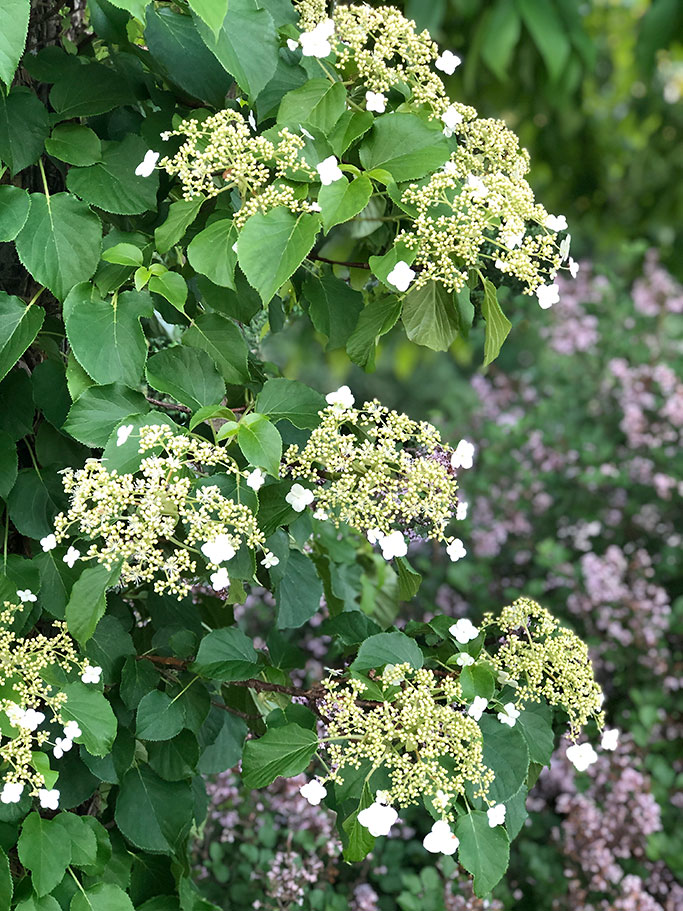
These days the only vines you will catch me planting are Clematis (which randomly die for no good reason) and Hydrangea petiolaris, which is always well-behaved. A mature one came with my new house, and when the tree it was climbing on died, we left most of the trunk standing, because nobody messes with my Climbing Hydrangea. You really should plant that one.


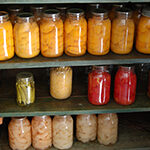
We’ve robbed Peter AND Paul, and now the cupboards are empty. It's a good thing we know how to fill the shelves.
As we kick off 2022, Christensen’s is happy to celebrate our 91st year of serving the Metro Detroit landscape industry. It is our pleasure to be a part of this industry with you.
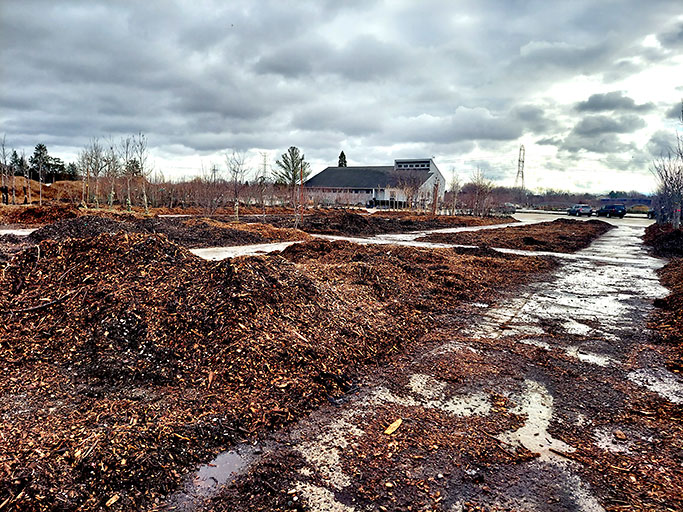
Over the past three years, the green industry in Michigan, and indeed the country, has been on a high. But that high has come at a price, and that price has been our supply pipeline. The media has spent the past many months talking about supply chain woes. Anyone that has bought a car recently knows. Our supply chain woes have been slow in coming, and, regrettably, will be slow to reseed as well.
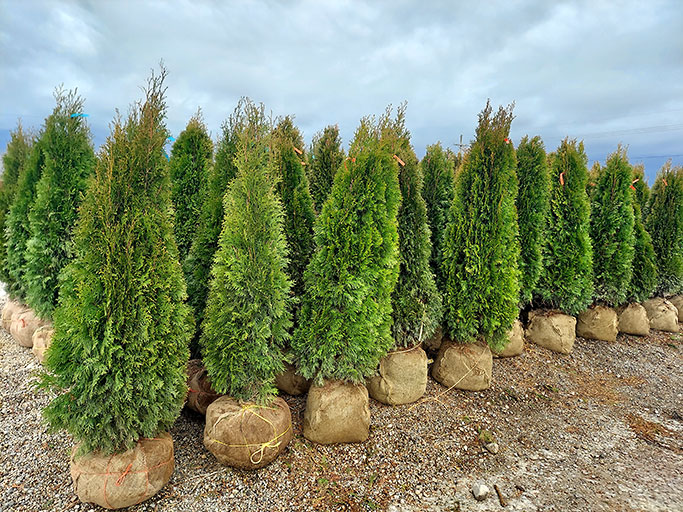
Growers in the nursery industry have spent the last three years trying to keep up with almost unprecedented demand. Unfortunately, our products take significant time to come to market; time that the growers have not had. Since an 8’ tall spruce takes almost 10 years to come to harvest, growers have done the only thing they could do to keep up with demand, which is to sell material early. In 2019, landscapes consumed some of the material slated for 2020 projects. In 2020, landscapes consumed all of that year's crop, and a large part of 2021’s crop, compensating for what was used for 2019 and covering the increase in sales. In 2021, the cycle repeated itself.
Now we find ourselves in 2022, and there is nothing left to steal. Growers find themselves selling smaller and smaller plant material as landscapers accept smaller sizes to fill a planting. This does not allow for the filling of the pipeline with larger material, as it is all sold in a smaller size.
With our product that takes between a few months to a decade to produce, the refill will be slow.
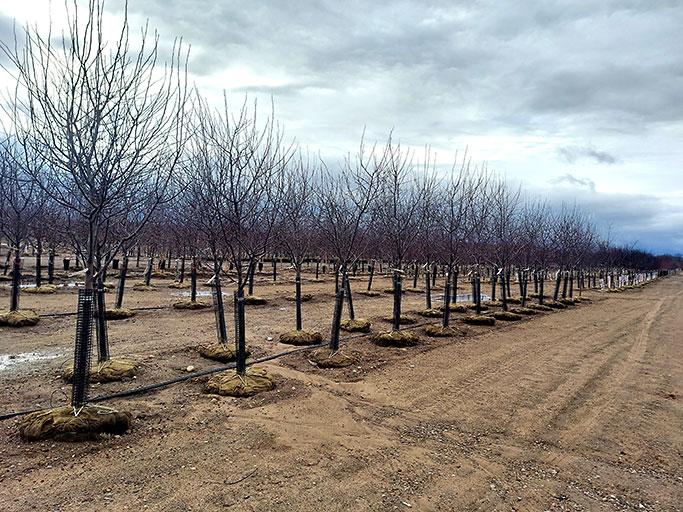
Christensen’s will be a landscaper’s best friend as we navigate this supply issue. We are in constant contact with growers all over the country sourcing material. Our relationships allow us access to material often before it is published on an availability. Please use this resource! Let us use our reach instead of you spending hours trying to get answers.
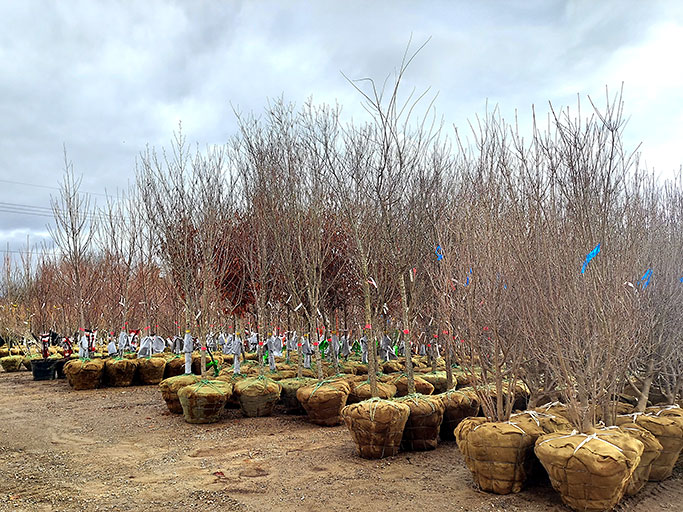
Christensen’s Plant and Hardscape Centers is honored to be the resource for the landscape industry in southern Michigan. The relationship we have with you drives us every day to make sure that we are doing everything we can. And this year is no different.
As I write this, I am watching our yard operations crew unload yet another load of trees. With the first trucks of the year arriving in mid-February, we continue our preparations for the 2022 landscape season. Plants and hardscape materials will continue to roll into our yard. I encourage you to use our 91 years of experience.


November 15 is the first day of firearm deer season in Michigan, and like many of you, I will be in my blind before sunup.
But deer camp isn’t about the hunting.
I came late into hunting. It just wasn’t something that interested me in my youth. I had always liked the shooting sports, but just never found the allure in hunting. Sometime in my twenties, my father and uncles convinced me to come to deer camp with them.
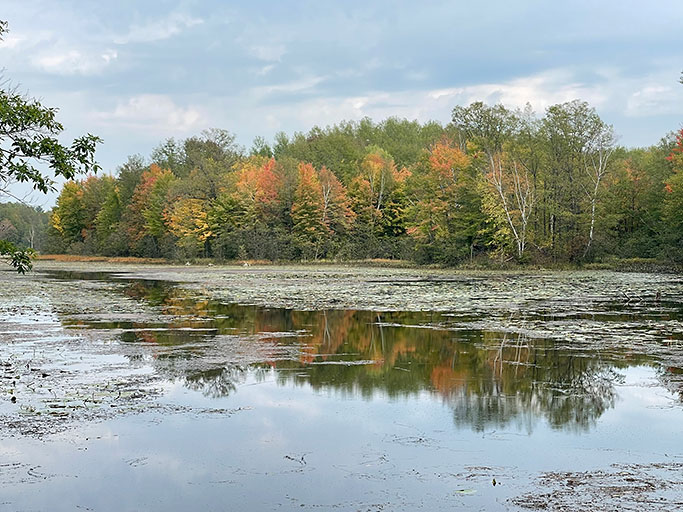
I had always thought of deer camp as this place that you went to. A place to basically sleep, as you spent all of your time hunting. I guess that is why I never was really attracted to it. Boy, was I wrong.
Deer camp allowed me to see my grandfather and uncles in a whole new light. I had always enjoyed being around my grandfather and uncles, but this was different. At camp it was only the adult men in the family. No kids, no moms. So, the rules all changed. Not that they suddenly became these crazed people, but they definitely let their hair down. And three of these guys are bald, so you can only imagine…
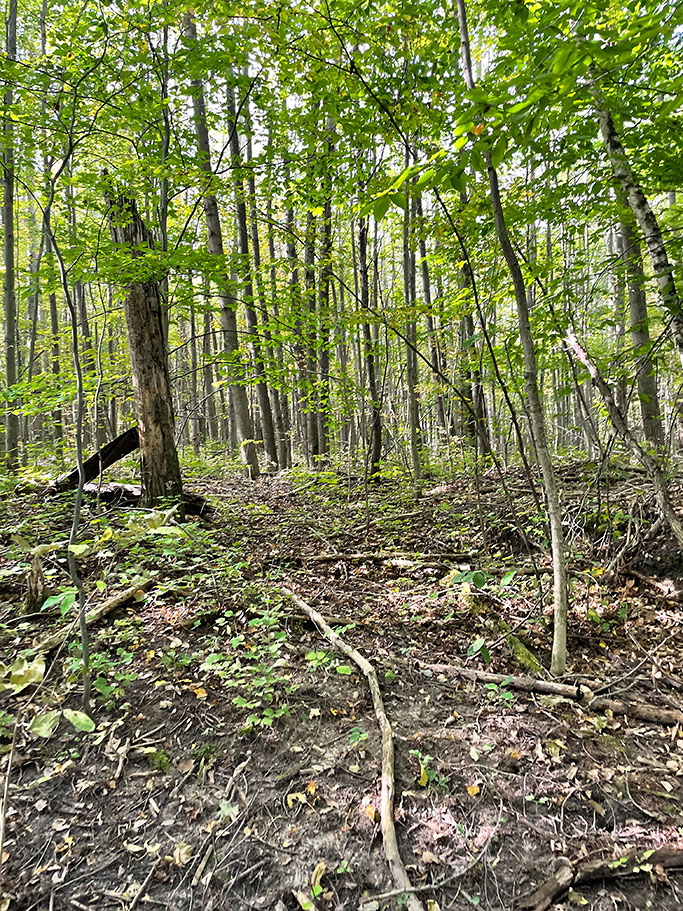
For the first few years I was the only grandchild there, the advantage of being the oldest of ten grandkids. And so, I got alone time with my grandfather. I got years of alone time with my grandfather. I chose a blind near his so I could have the walks in and out with him. I would get up early, which I HATE TO DO, so I could share breakfast with my early-rising grandfather and uncle. Looking back as I write this, I cannot help but smile at the memories that I made with my grandfather, and continue to make with my father and uncles.
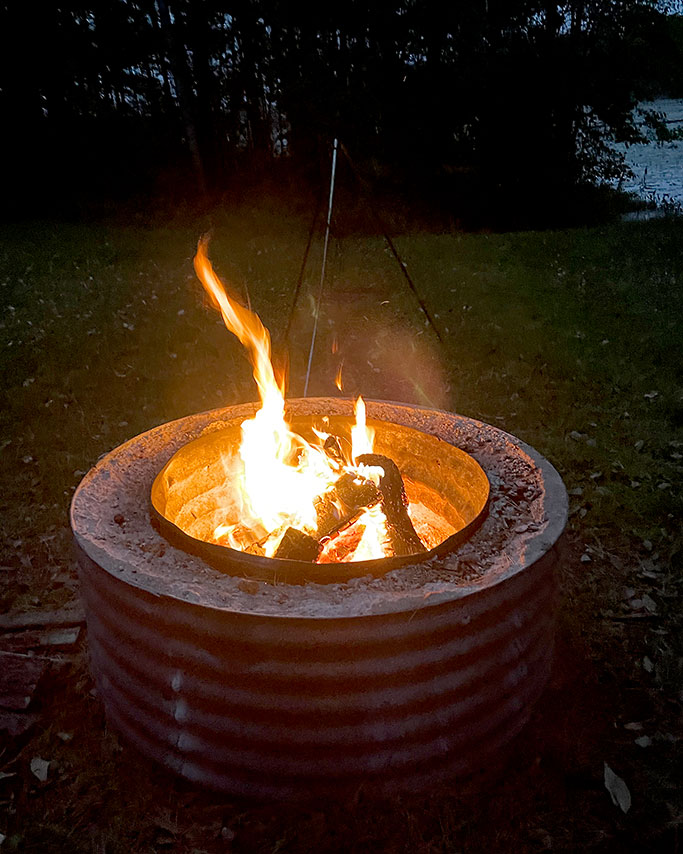
My grandfather passed away from cancer in January of 2005. But he made it to deer camp in November of 2004. He couldn’t go to his blind, and just stayed around the camp and ate with us. But he was there. We still go to the same place to camp every year. We take the same campsites. We tell a lot of the same stories. And I wouldn’t trade it for anything.

Out of the seven of us that go to camp every year, we average one deer every other year. So no, deer camp isn’t really about the hunting. Good luck everyone, at YOUR deer camps, and may the memories you make last a lifetime.


This year has been one of the worst grade B late-night horror movies ever made! It is so bad that I would rather fast-forward and just watch the commercials. Thankfully, it’s almost over, but before we get to the credits I have a spoiler alert for what could be coming - a slip, slide or fall on the patio, steps, or driveway. Trust me when I say that the horror experience will only continue at the hospital. Here is some info so you can just fast-forward through those last few painful moments and hopefully save yourself from enduring a sequel in 2022.

USCapitol from Washington, D.C., United States of America, Public domain, via Wikimedia Commons
What deicing chemicals do most concrete manufacturers suggest using?
There is a lot of conflicting information about this out there, so let me distill it for you. All of this stuff can cause corrosion so choose your product based on the temperature range you are expecting and use whatever you use sparingly. Least damaging and preferred in most situations is good old rock salt, sodium chloride (NaCl) which is most effective to about 15°F. Colder than that, use calcium chloride (CaCl2) which works down to -2°. It is slightly more corrosive. Products containing magnesium should be avoided.
Are there any recommendations for using deicing products?
Follow the directions listed on the bag! In addition, practice these simple recommendations:
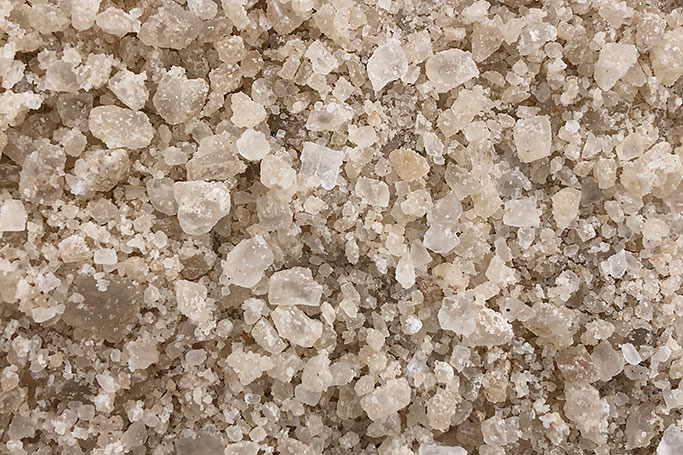
Famartin, via Wikimedia Commons
Can other types of deicing products be used?
It is not recommend to use any other types of deicing chemicals. This includes:
The deicing product is not sodium chloride or calcium chloride, but the product label says it's safe for concrete. Can this product be used on concrete pavers?
It is not recommend using any products other than sodium chloride and calcium chloride. Research has found that some products are incorrectly listed as “safe” for concrete and do cause damage to concrete and concrete pavers.
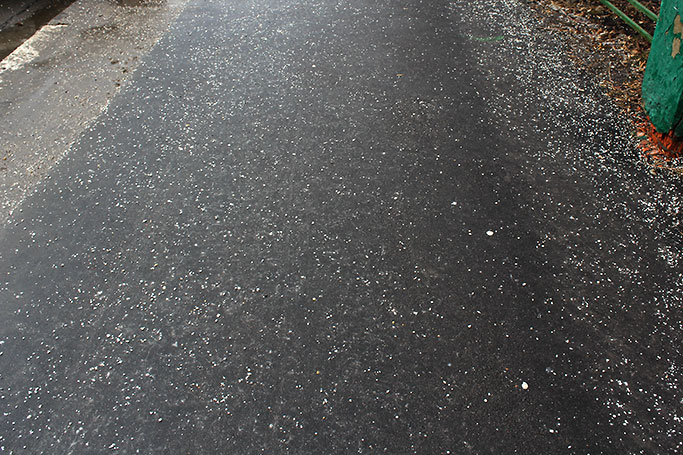
Stolbovsky, via Wikimedia Commons
Will sodium chloride and calcium chloride damage plant material?
Unfortunately, they can. Always use sparingly and try to prevent runoff of meltwater into landscape beds.
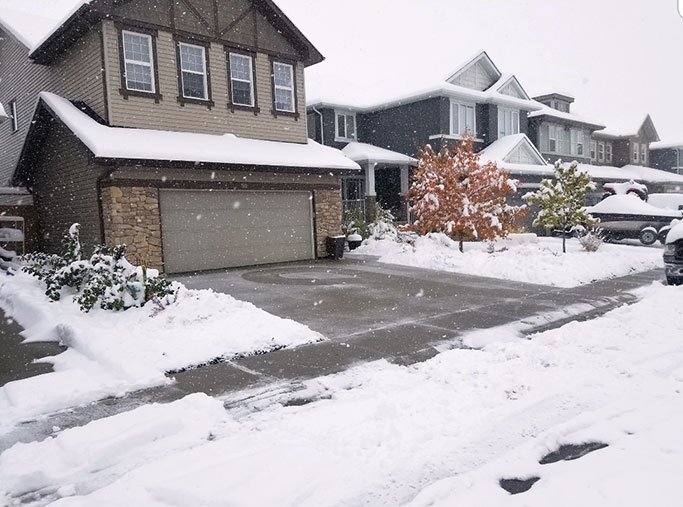
AGreenFutureCalgaryLandscaping, via Wikimedia Commons
Other types of deicing chemicals have been used on ready mix concrete sidewalks without damaging the surface. Is this because concrete pavers are not as strong?
All concrete materials are susceptible to damage from deicing chemicals no matter how the concrete product is produced. It takes time for this type of damage to show. Concrete pavers are typically two to three times stronger in terms of pounds per square inch strength and have lower absorption rates than pour-in-place ready mix type concrete so are actually more resistant to damage. Proper application and cleanup of deicing products will go a long way in assuring the longevity of your concrete installations.
Call us at the Hardscape Center if you have any questions or concerns on what you should or shouldn’t use to help keep those patios, walkways and driveways looking great.
.


I don’t do trees. Personally, I find them scary. Not just because they can fall on your house, in your pool or knock out your power. They are a force to be reckoned with! One time a tree came down on a house in my neighborhood and I was relieved when it didn’t totally crush the house.
Trees with weak limbs are definitely on the scary list. Pear. Silver maple! And of course, the tree that takes the scariest contest win every time. Weeping willow. Seriously, every scary movie has a weeping willow in it somewhere and as soon as you see it the creepy music starts playing. Oh, but wait. Google "weeping willow" and you get pics like this one from a horror novelist site.
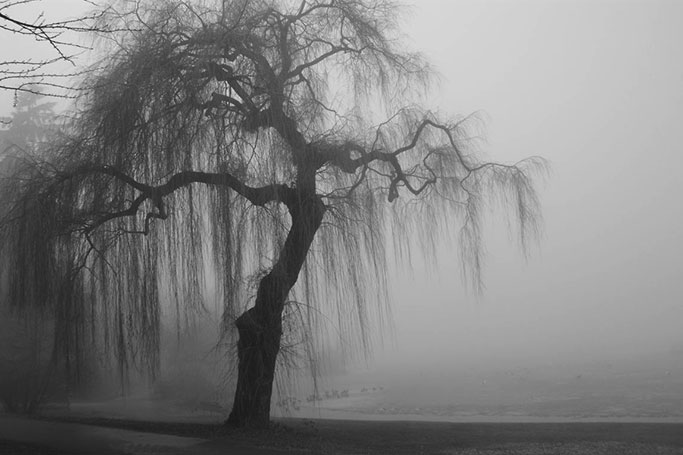
You heard the music didn’t you?
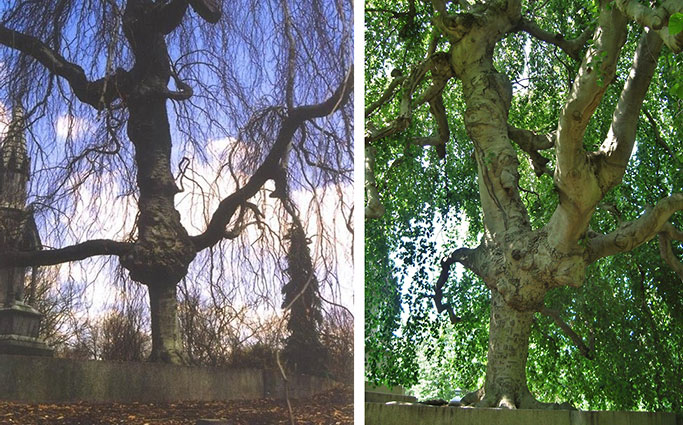
Msact at English Wikipedia, CC BY-SA 3.0, via Wikimedia Commons
Maybe the weeping willow isn’t THAT scary, but how about this horrifically misshapen weeping beech at the Mt. Auburn Cemetery in Massachusetts? Honestly it looks like it wants to grab you by your hair. Massachusetts has plenty of spooky - ever hear of the Bridgewater Triangle?
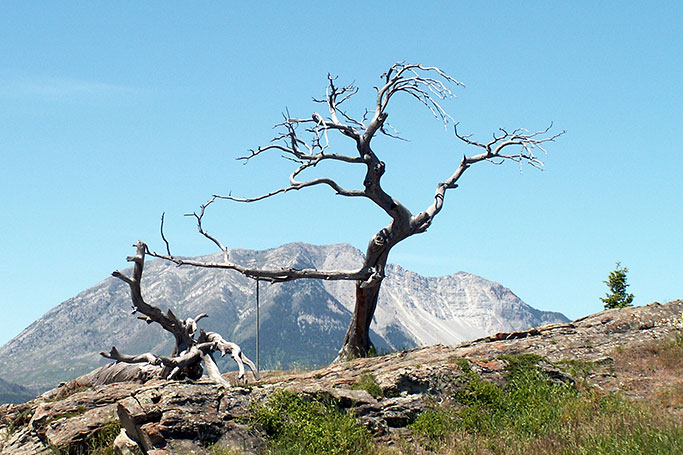
Monsieur david, CC BY-SA 3.0, via Wikimedia Commons
Or check out the Burmis Tree in Alberta, Canada. It died in 1970 after living probably 700 years. Amazing and weird – yep, but the story goes on, this ancient limber pine stayed standing for another 28 years until it was knocked over by a wind storm. Now for something straight out of Steven King: the locals propped it back up and – like a zombie – it still stands on it’s cliff top for all to see.

Esparta Palma, CC BY 2.0, via Wikimedia Commons
Examples of scary trees like these exist all over. Scary trees don’t bother you? How about haunted trees? Let’s start with The Island of Dolls in Xochimilco, Mexico, haunted by hundreds of creepy whispering dolls hanging from the trees. Or the Hoia-Baciu Woods in Romania. Did I say Romania? I meant TRANSYLVANIA. This forest has a haunted circle where no trees will grow. And then there is the Freetown-Fall River State Forest ALSO in Massachusetts, aka the Cursed Forest, site of murders, supernatural events, and Sasquatch sightings. Something for everyone, really.
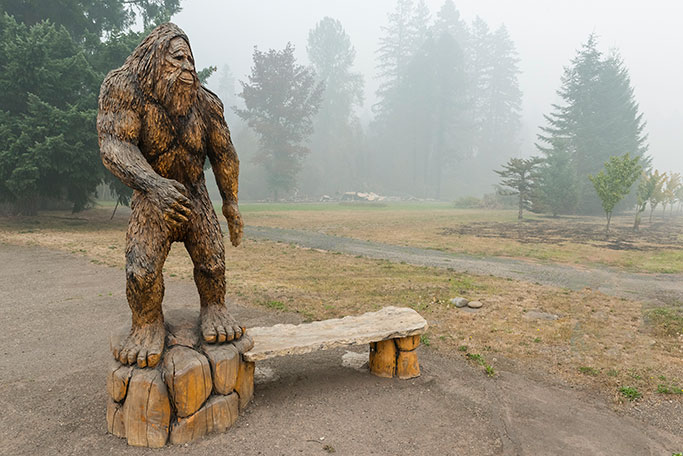
Oregon Department of Transportation, CC BY 2.0, via Wikimedia Commons
None of the examples above have given you the chills? People can find faces in grilled cheese, why not in trees? And feeling creeped out and scared can be easily caused by too much Halloween partying. Let’s return to the easier facts then.
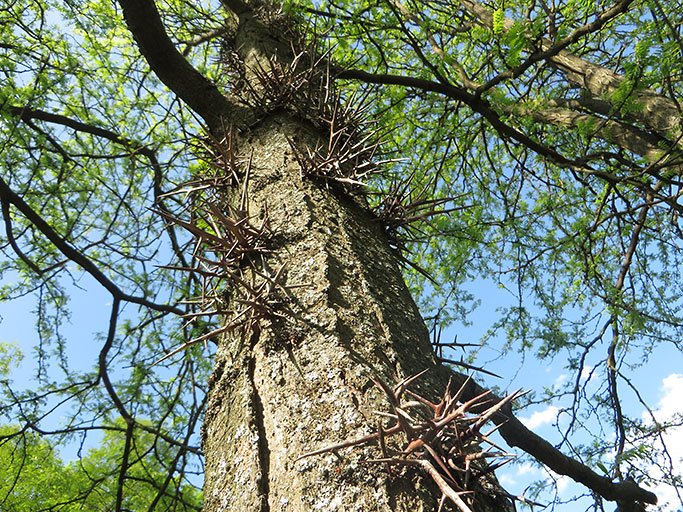
AfroBrazilian, CC BY-SA 4.0, via Wikimedia Commons
You just can’t make this up. Barbed wire? No… thorns on a tree!!! Scientific fact – this is your old friend the Honeylocust sporting these daggerlike thorns. Thank a nurseryman for breeding the thorns out of them for us. This photo makes me think of some evil creature in a horror movie dragging a club with thorns – I can’t remember the movie but some horror slasher from the ‘80s.
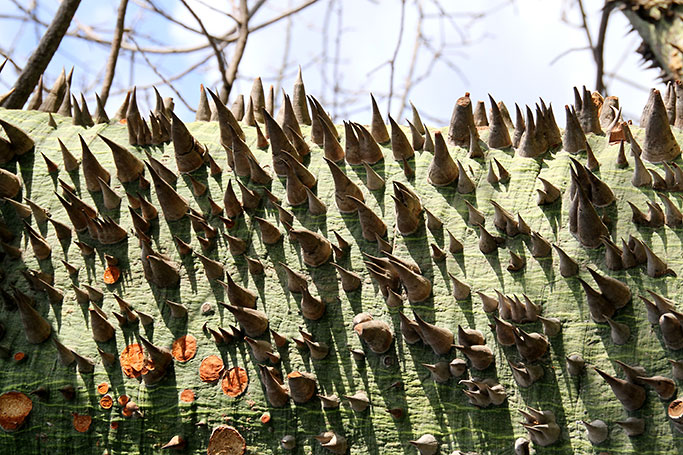
Gerd Eichmann, CC BY-SA 4.0, via Wikimedia Commons
But it could be worse – check out the spikes on the trunk of this charming specimen. Introducing the White Floss Silk Tree, Ceiba insignis. I am happy to report that it is NOT HARDY HERE.
(We are going to pass on cactus with their evil kitten claws, for now)
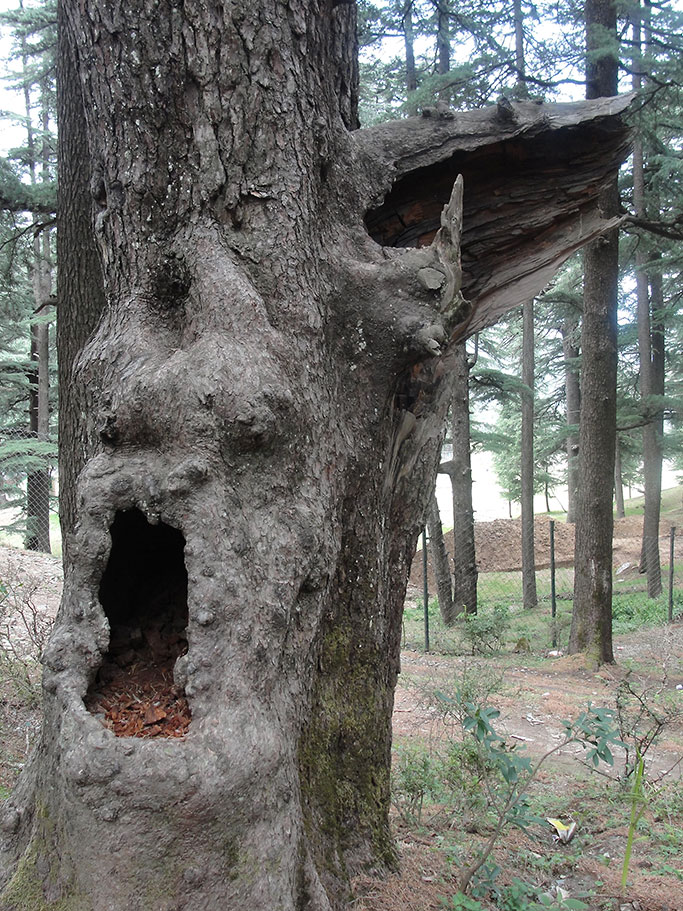
Tajinderpalsinghbhatia, CC BY-SA 4.0, via Wikimedia Commons
With all that said, I love October. Keep your pumpkin mocha – give me a good scary movie and some popcorn. I do love to be scared, just in a different way.


I have a friend who earns his living in an unusual field – he is a graffiti artist, commissioned to place his art on buildings. When we met, he oversaw pest management at the greenhouse we both worked at. Since then, his hobby has become his passion and livelihood. He has travelled the country splashing his art on the walls of Miami, Chicago, Kansas City and more. If you’ve been in Detroit or Toledo, you may have seen his work.

Boys and Girls Club, Detroit, Michigan - Mural © PHYBR
I’ve always thought of landscape color plantings as a form of “Guerrilla Art”, which is a term applied to certain forms of street graffiti. There are a lot of similarities if you think about it. Graffiti and landscaping are out in public space for everyone to see and enjoy (or critique). Also, the color theory needed for public space is the same. Both need to consider sight lines for how the art will be viewed. Both need to adjust for mere moments of attention versus minutes or hours of retrospection in a museum or walking garden. If people are speeding by on a freeway, the audience needs to be able to see large blasts of color to interpret the art. Bigger and bolder is most often better. And planning for surroundings is essential to get the cohesive aesthetic the artist is trying to achieve in the outdoor arena.


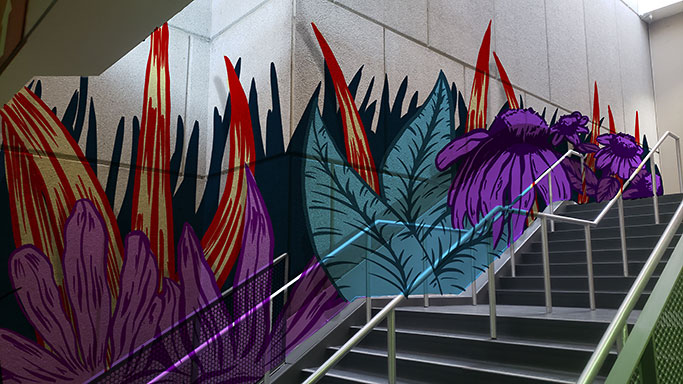




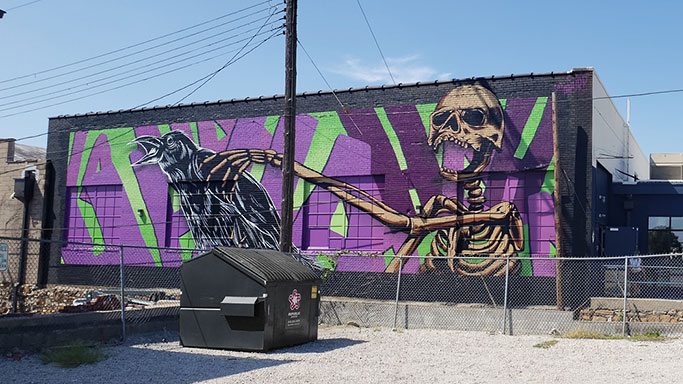



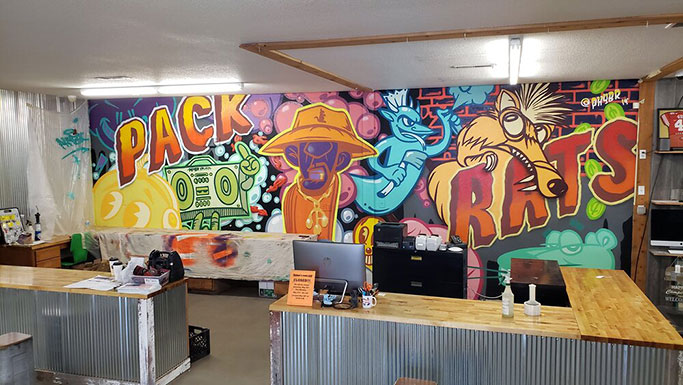
Do you consider yourself an artist? Most landscapers I know would not. However, it’s hard to deny that the masterpieces they create in yards and public spaces are works of art. I would argue that the medium you use is the hardest to work with, since it is living (or must incorporate the living, if you’re creating a hardscape). Further complicating your living artwork is timing. If you work in annuals, this is less of an issue, but perennials, flowering shrubs and flowering trees all need to be installed with their bloom season in mind. Perhaps you should start listing “Artist” on your business cards… or “Guerrilla Artist” if you want to be edgy.
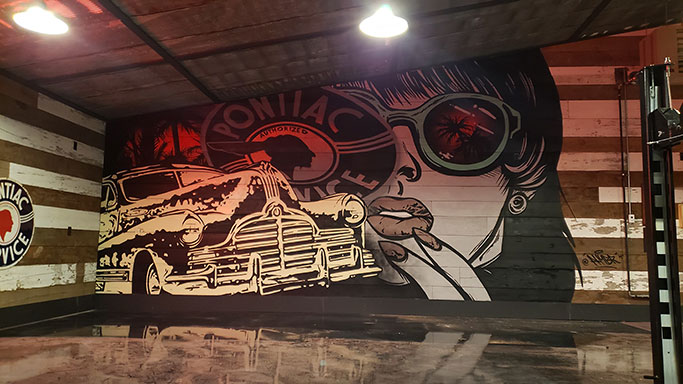
All images © PHYBR
When I met my friend, he was in a phase of his life where he didn’t express to others that he was an artist, but the transition has transformed his work into his passion and he can’t hide his creative prowess any longer. Obviously, we don’t all need to quit our jobs and become graffiti artists to capture or recapture our passion. We can continue to be artists in our current jobs and turn our love of landscape into artwork the public can enjoy.
For some helpful color theory tips to elevate your art, check out Makenna’s article from last year.


As someone in an outdoor profession, I spend a good portion of my monthly budget on sunscreen. My lily-white skin burns so easily that I wear SPF 30 well into the fall and winter. I’ve experimented with many different SPFs, application methods, and consistencies.
While I’ve tested many different brands and formulas, there are a few things that I typically look for.

Yoav95179, CC BY-SA 4.0, via Wikimedia Commons
Firstly, I check to see if the product contains Oxybenzone (Benzophenone-3), which may be carcinogenic, can cause skin allergies, and which has been shown to have harmful effects on marine coral. Exposure to Oxybenzene affects larval coral by making their skeleton structure develop prematurely and all wrong! Marine biodiversity is compromised and that is bad for the planet. Buying products with zinc oxide or titanium dioxide can help keep this chemical out of our waterways and oceans. In 2018, Hawaii was the first state to ban the sale of sunscreens containing Oxybenzone, and other island tourist destinations have done so as well. Research on this is ongoing.
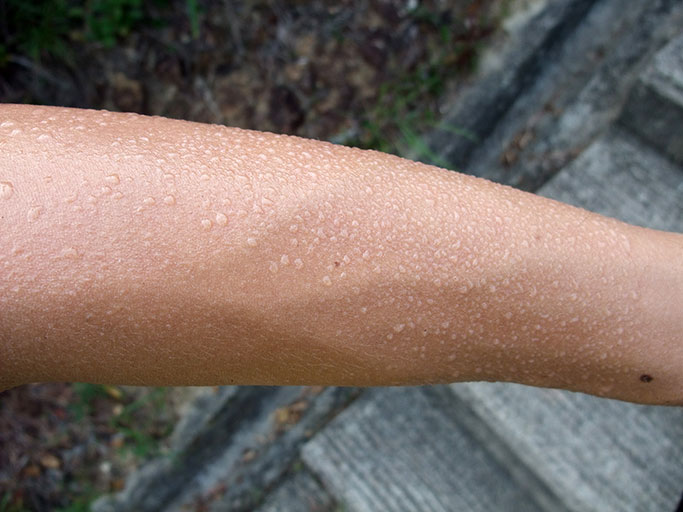
Minghong, CC BY-SA 4.0, via Wikimedia Commons
Another thing I look for is water resistance. You’re out in the sun and you’re going to be sweating! If your sunscreen doesn’t have any kind of water resistance than you’re going to have to remember to put more on constantly through the day. I don’t know about you, but I have a hard enough time remembering to reapply even a couple of times when it should be done every two hours. Looking for a sunscreen that is water resistant for at least 30 minutes is very helpful. If you get caught in the sprinklers or are really sweating you’re still going to have to put on more but this may buy you some time and prevent a terrible sunburn.

Kelly Sue DeConnick from Kansas City, MO, USA, CC BY-SA 2.0, via Wikimedia Commons
The third thing I look for is either aloe or moisturizer. Being out in the elements all day really takes a toll on your skin. Both sun exposure and wind have been proven to be drying and abrasive. Prolonged UV exposure to skin can cause premature aging at the very least. No one really wants to look 20 years older, so using a sunscreen can help create a barrier between your skin and the elements.

Comparing twins after a lifetime of sun exposure - St2671, CC BY-SA 4.0, via Wikimedia Commons
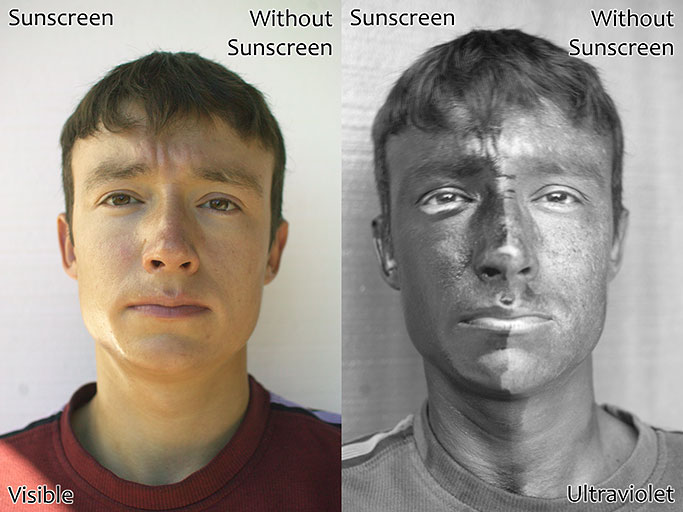
Sunscreen blocks those UV rays - Spigget, CC BY-SA 3.0, via Wikimedia Commons
Sunscreen can be kind of a pain to remember, but it’s definitely worth the effort. Sun damage is cumulative over your lifetime and can be worse than a simple sunburn, as painful as those can be.


Alliance Lighting’s Bluetooth series of fixtures continue to gain in popularity. What started with the single, yet revolutionary, BL200-BT “bullet” fixture has grown to over 20 different fixtures, which include path light stems, understep fixtures, downlights, uplights, and more in a short period of time.
Let’s talk about how to market these to your clients.
Have you proposed installing these versatile, high-quality fixtures only to be told that your client is not interested in color-changers? Maybe they can’t anticipate ever using anything but white, or don’t want to be locked into “color” only. But here’s the thing - the RGB color change ability is completely optional. These fixtures can stay entirely in the white spectrum, and even have three preset “white” color temperatures. Or you can choose just the right tone and brightness from the graphical interface in the Alliance bt app.

Here’s another selling point - setting up and running your own custom lighting scheme is dead easy. You can group fixtures into zones that all run the same program, for instance. An example might be to zone six directional spots on the front of the house, another with three wide-beam spots on various focal points on the property, and a third for four or five path lights on the walkway to the front door. Each zone can be controlled independently by the client right from the app. Any fixture in your installation can be grouped with any of the others, no need to be on the same run. Also, you can define up to three "scenes" that can be toggled on and off at will.

One more feature: All of Alliance’s BT series of fixtures are dimmable. Clients have the option of changing how bright or how soft they choose to illuminate every aspect of their property, by fixture or by group. There are no additional switches, transformers, or other equipment needed, and changes take effect instantly. The app makes setting lighting schedules easy and they run on their own thereafter.





In conclusion, Alliance's BT series can be zoned, are dimmable, and run from an easy-to-use mobile app. The color change ability is an extra, fun option to use seasonally or whenever the whim strikes, without having to invest in more equipment later. The app is available for Android and Apple devices and is free to download and use.
Landscape lighting just keeps getting better and better. There are few properties that can't be enhanced by outdoor lighting and having a professionally designed and installed system like Alliance's can make a big difference in a client's property value.
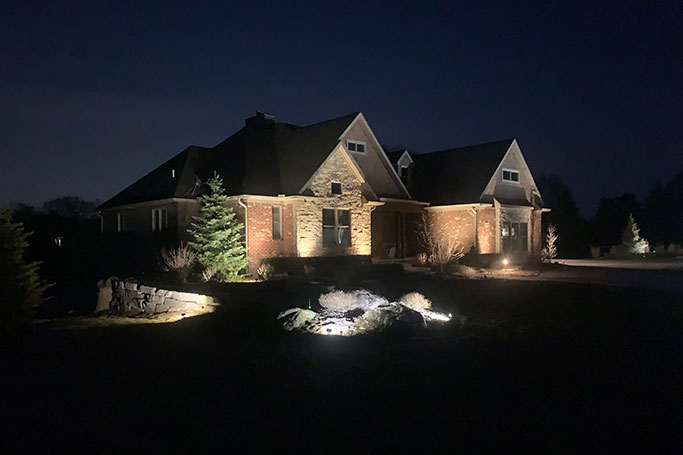


Oh, how time flies... It feels like yesterday that my 21-year-old self started my first day here at Christensen’s Plant and Hardscape Centers. I get asked all the time “are you new here?” so I thought this would be a great opportunity to share a little about myself.
This industry is not new to me. Growing up I would take every chance I could get to make a couple of dollars. I earned 10 cents for every spaded tree that I would crimp while helping my grandpa at his Tree Farm and Garden Center. It may not sound like much, but when you are that young a few bucks in your pocket feels like a lot!
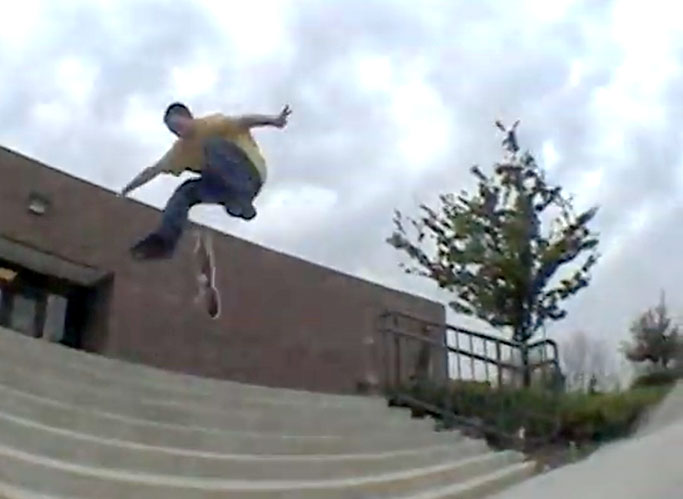
When I was not in school or skateboarding, I would continue helping at the tree farm. I learned how to operate machinery and about the basic plants. In my late teens I worked at a local hardscape supply store where I gained experience with brick, natural flagstone, and outcropping. This would go on for four years until I joined the Christensen’s Team.
I remember my first day coming in to work, not knowing what to expect. I started on the receiving crew and what a change! Coming from a small garden center to a large operations re-wholesale center, things were totally different. From unloading one truck a week to having trucks wrapped around the building daily in certain times of the year was a major change that I enjoyed.
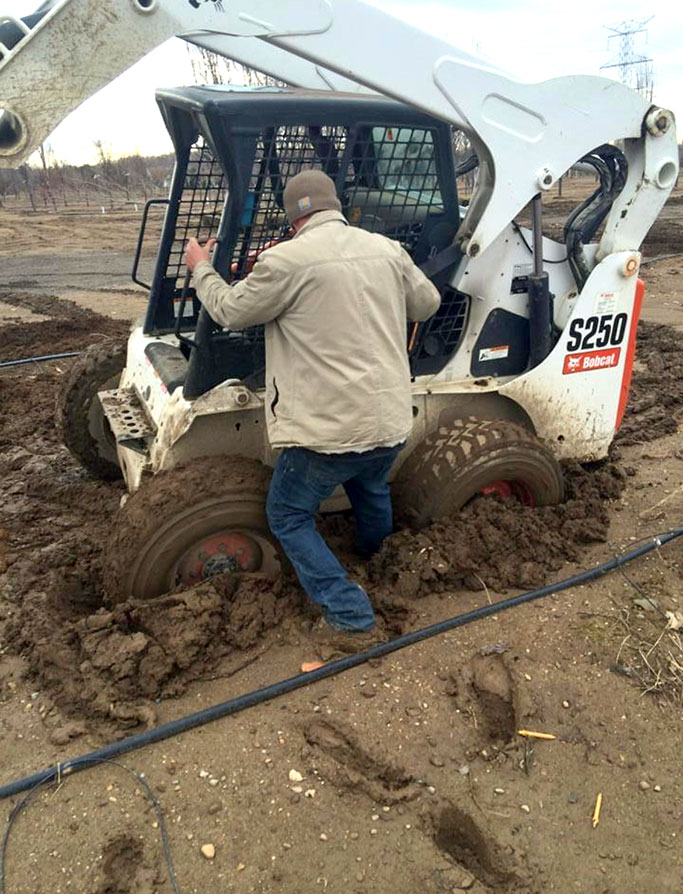
Check out that mud
I did not realize how little I knew until starting here. Yet I felt welcomed from my first day. Everyone was friendly and very helpful getting me started. Our yard operations manager Chris took me in, gave me the tour and set me up with the crew I would continue working with for the next four to five years. There were some language barriers but that helped me become more attentive on how to operate efficiently and even began sharpening up my Spanish. At times It was tough work and a messy job, but I looked forward to coming to work every day and a job like that is hard to find.

Maybe you've seen me on one of your deliveries? Christensen’s was generous enough to take the time to help me earn my CDL. Again, it felt like another first day! I would help with deliveries when it was needed for the next couple years.
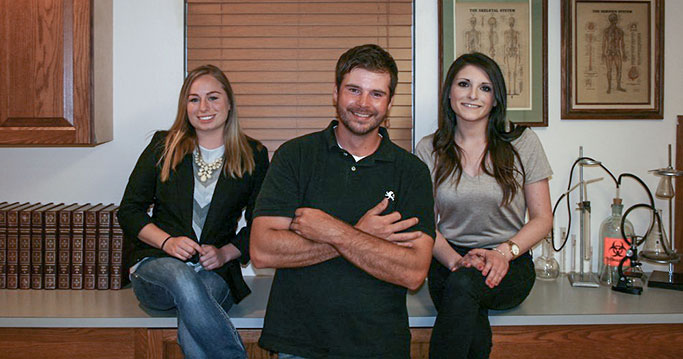
Around this same time my lovely girlfriend, my business partner, and I opened an Escape Room in Brighton. We had to close due to the pandemic and when we were able to re-open in October of 2020, a truck crashed into our building and we were forced to close again. We decided to move forward, and we sold our company the beginning of 2021.

This? This was not good.
After a couple years of driving, I found myself on our sales team. With everything I’ve done up to the point of getting into sales and with the help of our knowledgeable staff, it made me very comfortable starting this new journey. I am now part of our outside sales team. I am grateful for having the opportunity of working here and for all who helped me along the journey. I still wake up every morning excited to come to work.
Next time you see me around, feel free to say hi! Cheers to the next ten more!

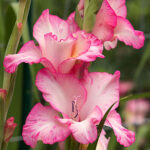
When I was growing up my father and I planted gladiolus corms in our flower garden next to the house. I remember their bold colors reliably displaying each summer. When I moved into my own home years later I found all sorts of new and exciting colors available. They were beautiful that first year, but the following year I noticed that most of my glads didn’t come back. After some internet-sleuthing I realized that they are supposed to be lifted and stored inside for the winter. So why did they always come back when I was a kid?
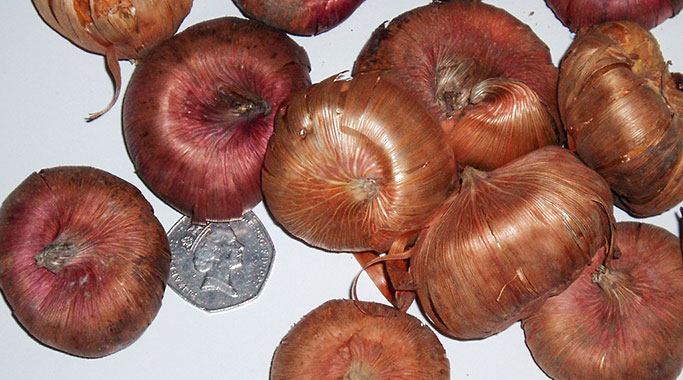
Gladiolus corms, Wikimedia Commons
Microclimate perhaps? Our main flower garden was against a south-facing brick wall, with years of compost mixed into our sandy soil. Glads don’t like a wet bum, so our native, well-drained soil was a good match. The sun-exposed brick wall warmed up the soil, tempering the chilly winter ground.
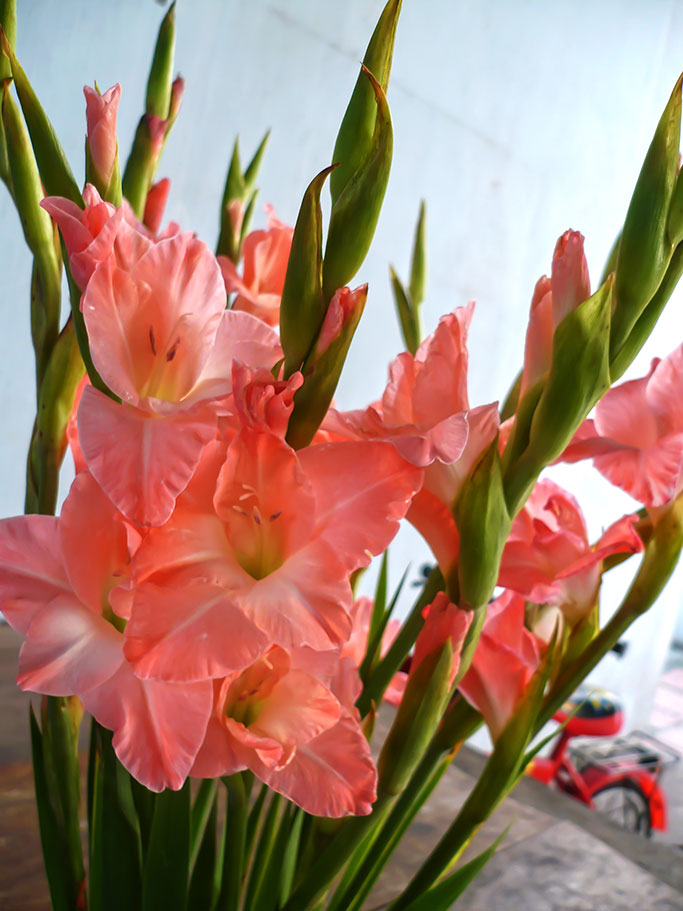
Prenn, CC BY-SA 3.0, via Wikimedia Commons
Could it have been the heirloom varieties we grew? I’m generally a believer that local heritage varieties are hardier. This seems to be the case with gladiolus. In my experience the new fancy ones, though beautiful, are hit-or-miss with successfully overwintering in our area.

Internet Archive Book Images, via Wikimedia Commons
Here are some tips to help you on your way to beautiful spires of color each year:
Be sure your pots are large and heavy enough so the flowers won’t blow over, also make sure they have drainage holes. Add rocks to the bottom of the pot, top with a sandy soil mix. For an extended blooming season plant pots a couple weeks apart, or mix varieties in the same pot. You can add supports to help the spires stand up as they grow tall. There are shorter, and even dwarf varieties available that may work well in pots without support or the fear of wind damage on balconies. After the flowers are spent it could be a good time to move the pots somewhere less conspicuous, as the plant does not rebloom. Sometime before the first frost, dump out the pots and collect the corms, set them somewhere where they can dry in the open air for a couple days, then lightly cover them up to dry further. For final long-term winter storage place them loosely in layers in a cardboard box, separating layers with newspaper. Keep them in a cool dark place where they may nap until spring, protected from animals and sub-40f temperatures.
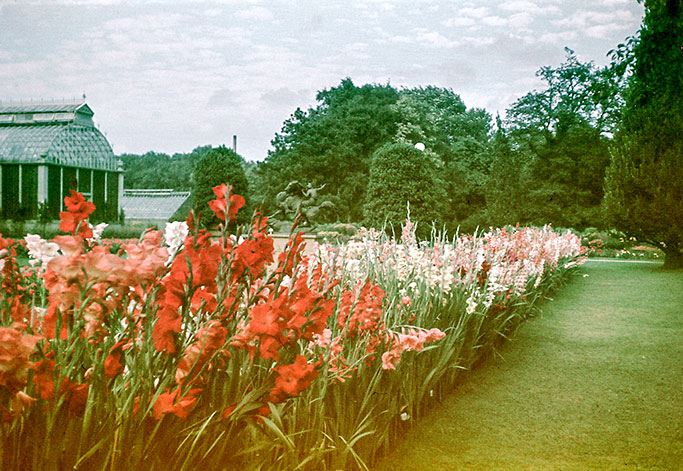
Västra Götaland, Göteborg, Göteborg, Västergötland, Miljöer-Stadsmiljö, Byggnadsverk-Parker och trädgårdar-Park
With a little bit of luck and some forethought you can have success simply leaving your glads in the ground! Moisture and extreme cold temperatures are what you’re trying to manage. To this end, I have found that digging trenches in sunny areas that are not prone to spring puddling works out well. Planting next to a sun-exposed wall is even better! Dig the trench about 14” deep and fill the bottom 3” with rocks. Mix some native soil with whatever amendments are needed to build a sand-heavy blend with a modest amount of organic matter. Plant the corms at various depths as you fill the trench with soil. I’ve sunk ‘em down 8” with no problems. Hardier varieties such as ‘Violet Queen’ and ‘Atom’, as well as many old heritage classics may help you gain an edge on the colder weather.
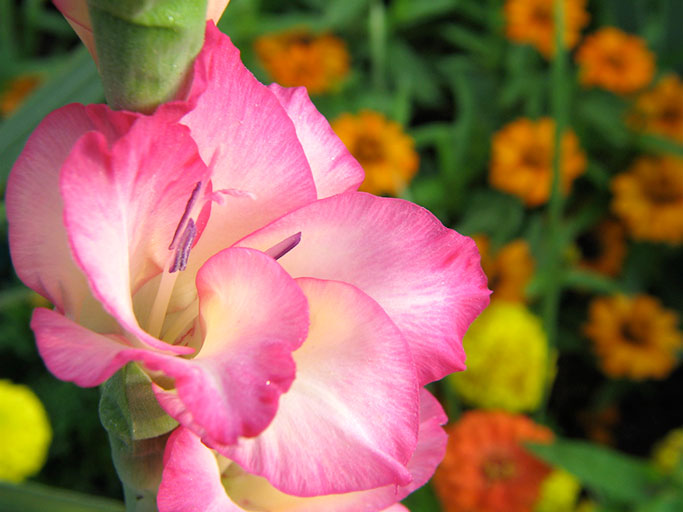
Audrey from Central Pennsylvania, USA, CC BY 2.0, via Wikimedia Commons
Glads will do well with a mulch covering the soil and a balanced fertilizer after emergence.
